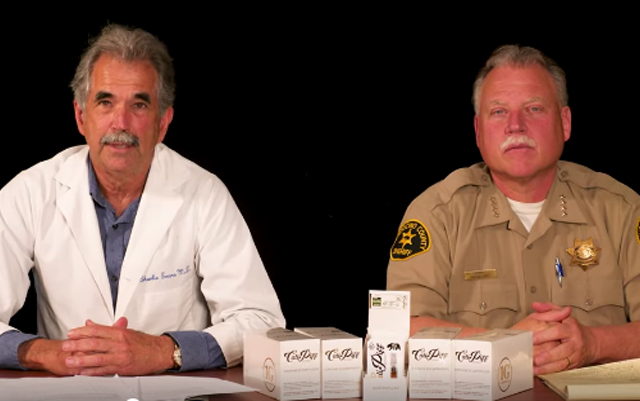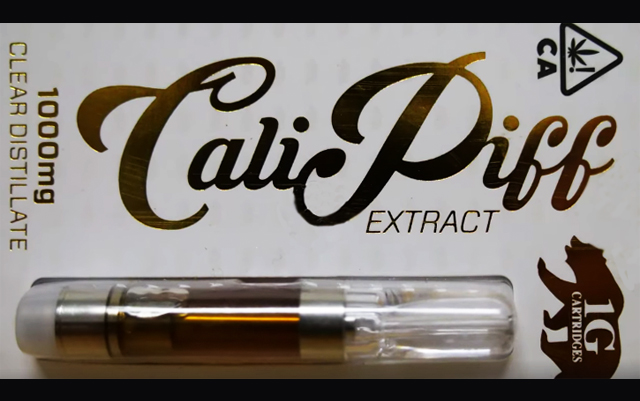A page one story in the L.A. Times last week reported on the whack-a-mole battle that city police have been waging against the sale of unregulated cannabis products. Based on its research, the newspaper estimated that more than half of L.A.’s dispensaries are unlicensed pop-up shops, and that they proliferate faster than the police can shut them down. Less visible are the hundreds, if not thousands, of delivery services and individual dealers of outlaw weed.
In southern California, cheap black market cannabis is a licensing headache. Legit retailers, with expenses that make it impossible to compete on price, fume about lost sales. State officials who based their budgets on rosy predictions of marijuana tax revenue are scrambling to deal with shortfalls in the hundreds of millions.
Meanwhile, about 500 miles north in Ukiah, California – a town of 16,000 that is the government seat of sleepy, rural Mendocino County – Sheriff Thomas D. Allman is equally frustrated about unlicensed cannabis. Mendocino is at the other end of the illegal cannabis pipeline. Much of the outlaw weed that ends up in L.A. pop-up shops is grown and processed in his county’s remote hills.
Allman’s problem is not pop-up shops, but rogue processors who damage the environment with waste products and who sometimes blow themselves up and start forest fires by mishandling the copious amounts of volatile substances it takes to produce “honey oil” for vaping. His department recently raided a processing operation, confiscating thousands of vape cartridges that were packaged to look legit. Valued by the sheriff at about $5 million, that’s a big sting for a tiny department with just 43 deputies – about one for every 80 square miles.
Allman’s frustration, however, has less to do with tax revenue than public health. He told The Marijuana Times that after the raid, “My guys came to me and showed me these fancy-looking packages listing the contents – how much THC, CBD, and so on. They told me, ‘We don’t believe it.’”
It’s not the sheriff’s job to get into the weeds of cannabis, but Allman was curious. “I thought it might be an issue.” He took a few of the cartridges to a local cannabis oil processor that has its own in-house lab. He asked them to run the same tests they do for licensed products. The results were shocking, but that news did not make it onto the front page of any newspaper. It was so shocking to Allman that he made a public service video and posted it on the department’s Facebook page to warn users.

The lab reported that the cartridges contained traces of insecticides and fungicides at levels many times the state’s legal limit for inhaled cannabis. Most alarming, according to the lab, was the presence of myclobutanil, a fungicide commonly used on almond and grape crops. It is listed by regulators for general use, considered safe in such instances. But when myclobutanil is heated, it decomposes into hydrogen cyanide, which is just as bad for humans as it sounds and the reason it’s prohibited for use on tobacco plants.
According to the U.S. Centers for Disease Control website, hydrogen cyanide is also used as a chemical warfare agent and is absorbed well by inhalation, interfering with “the normal use of oxygen by nearly every organ of the body.”
“Breathing small amounts of hydrogen cyanide may cause headache, dizziness, weakness, nausea, and vomiting. Larger amounts may cause gasping, irregular heartbeats, seizures, fainting. Hydrogen cyanide … can produce death within minutes.”
According to Miriam Carrero, director of the lab at Modular Processing Systems in nearby Willits, myclobutanil was present in the confiscated vape cartridges at a rate 7,300 times the state’s legal limit. She told The Marijuana Times, “I was astounded. I’ve tested a lot of vape oils because we do remediation and purification for legitimate producers, removing contaminants. That was the highest number I’ve ever seen. It scares me because I have friends and family who’ve bought those same cartridges.”

Allman has had the same experience. “I’ve never smoked marijuana,” says Allman, “but just about all my friends do. When I showed the results to one of them, he said, ‘Oh, my God! I have those!’ And he just about puked on the spot.”
So who do you call with information that could be important to thousands, hundreds of thousands, and maybe millions of Americans who buy the bulk of their cannabis products on the black market and have no idea what’s in them? For starters, there are 58 counties in California and each has its own set of regulations and enforcement policies. Is contaminated cannabis an issue elsewhere? Sheriff Allman says that if it is, “None of the sheriffs I meet at professional gatherings are talking about it. It never comes up.”
The obvious agency to go to would seem to be the California Bureau of Cannabis Control. But agency spokesperson Alex Traverso told The Marijuana Times that the Bureau is focused on the regulation and licensing of legitimate growers, processors, and retailers. “The industry is moving faster than the regulation. We are taking the soft approach to the illegal business for now instead of breaking down doors.”
Either way, he said, pesticide and fungicide contamination is the province of the California Department of Pesticide Regulation. Among the dozen or more state agencies involved in regulating various aspects of cannabis, Traverso said, “We all stay in our lanes.”
Complicating the issue are the fifty or so proposed bills currently being considered and heavily lobbied for in the California legislature regarding cannabis – any one of which could become law and change the regulatory landscape.
What happens in California does not stay in California. Of all the marijuana produced in the state, it’s estimated that 90 percent is illegally grown and most of it is exported by various means to markets across the country. It is a safe bet that a tiny percentage is professionally tested for contaminants, which include lead, a heavy metal that has been found in Chinese-made cartridges. It’s believed that the lead is leaching from the cartridge case into the oil.
The regulation of cannabis in California “is pretty much a s**t show at all levels,” says lab director Carrero. “I don’t think California was prepared for what’s going on and it’s going to take a long time to sort out.”






